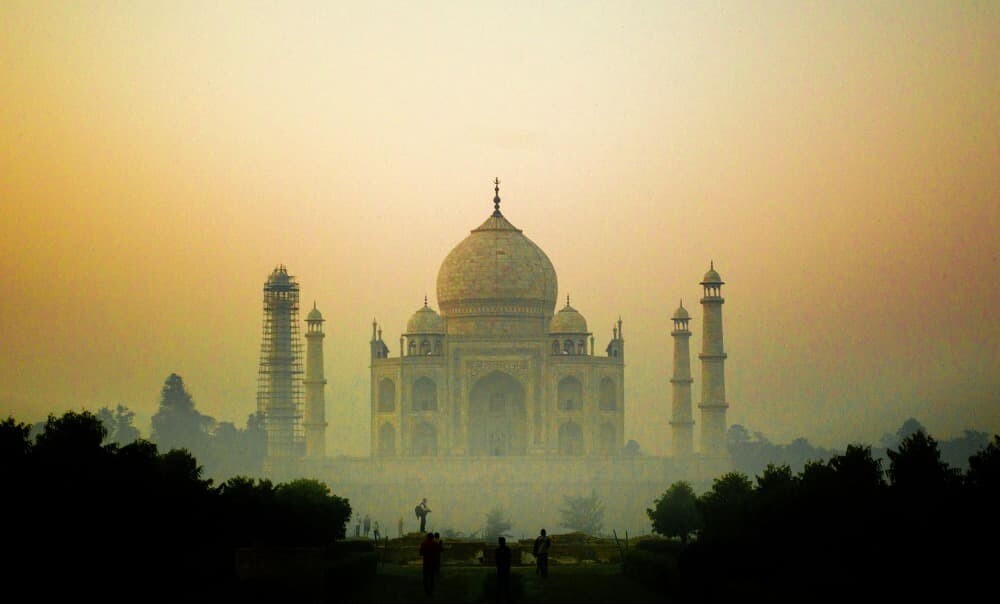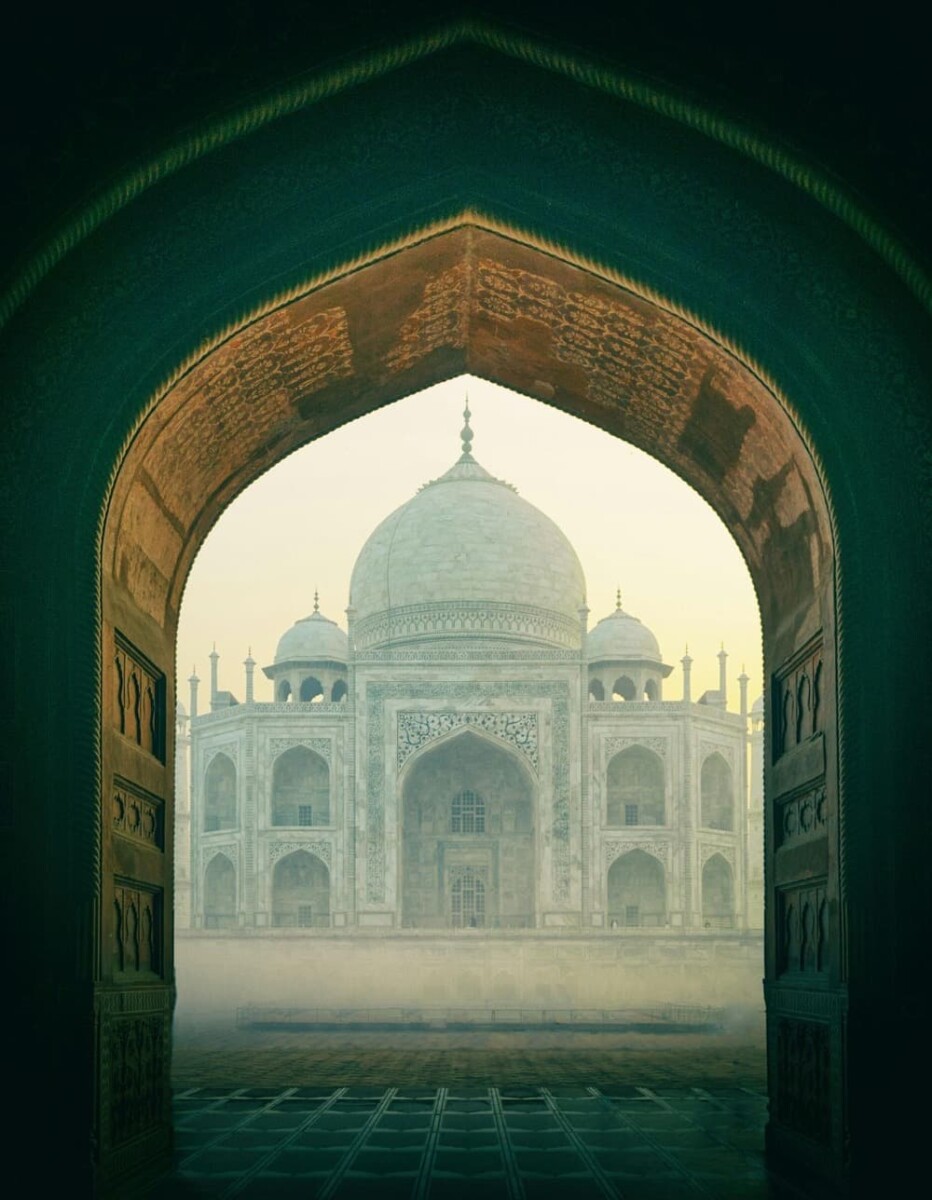India, a country in Southeast Asia, is the seventh largest in the world by area and the second most populous, with over 1.4 billion inhabitants. It borders Pakistan to the northwest, China and Nepal to the north, Bhutan to the northeast, and Bangladesh and Myanmar to the east. To the south, it is surrounded by the Indian Ocean.
India has a rich and ancient history that dates back thousands of years. It was home to the Indus Valley Civilization and has been the birthplace of major religions such as Hinduism, Buddhism, Jainism, and Sikhism. It was a British colony until 1947 when it gained independence.
At Cooperating Volunteers, we carry out different projects throughout the year, and many participants choose it as a destination to experience volunteering.
Today, we are going to talk about the most emblematic monument, considered one of the wonders of the world. So that when you visit it during your free time, you can learn a little more about it.

Do you know what we are referring to? Obviously, the famous Taj Mahal.
Its location is in the city of Agra, in the state of Uttar Pradesh, on the banks of the Yamuna River.
It was built between 1632 and 1654 by the Muslim emperor Shah Jahan of the Mughal dynasty, in memory of his wife Mumtaz Mahal, who died giving birth to their fourteenth child. His resources for the construction were virtually unlimited.
Ustad Ahmad Lahuri is generally credited as the principal architect, and it is estimated that around 20,000 workers participated in its construction.
This monument is a magnificent example of Mughal architecture, which combines elements of Islamic, Persian, Ottoman, and Turkish styles.
Although the marble-domed mausoleum, which is the most well-known part, with approximately 35 meters in height, belongs to a walled complex of buildings that occupies 17 hectares and also includes a large mosque, gardens, and a guest house. It contains calligraphic inscriptions from the Quran on the interior and exterior walls and is decorated with precious and semi-precious stones such as jade, crystal, turquoise, and lapis lazuli.
The Charbagh-style gardens are a Persian design divided into four symmetrical parts.
The Mosque and Guest House are located on the sides of the main mausoleum. And it is accessed through the main entrance portal made of red sandstone.
In 1983, it was declared a UNESCO World Heritage Site and is a symbol of eternal love and one of the finest examples of funerary architecture, making it one of the most popular tourist attractions in India and the world, attracting millions of visitors each year.

The word Taj comes from Persian and means “Crown,” while Mahal is a variant of the formal court name of Arjumand Banu Begum, whose meaning is “First Lady of the Palace.”
The conservation of the Taj Mahal is a constant concern due to air pollution, wear and tear from the influx of tourists, and the effects of the climate, such as acid rain. Various measures have been implemented to protect the structure, such as limiting nearby traffic and using non-polluting fuels in the surrounding area as it is adopting a yellow color.
By the late 19th century, several parts had deteriorated. During the time of the Indian Rebellion in 1857, it was damaged by British soldiers, sepoys, and government officials, who would remove semi-precious stones from its walls.
Estimates of the total cost of the construction of the Taj Mahal vary due to the difficulties in estimating costs over time. It is estimated to be around 52.8 billion Indian rupees (USD 827 million), although the value of gold at different times makes this inaccurate.
The Taj Mahal is iconic worldwide and therefore a must-see if you travel to India.
We recommend getting up early and enjoying the sunrise, which creates an unforgettable image.




